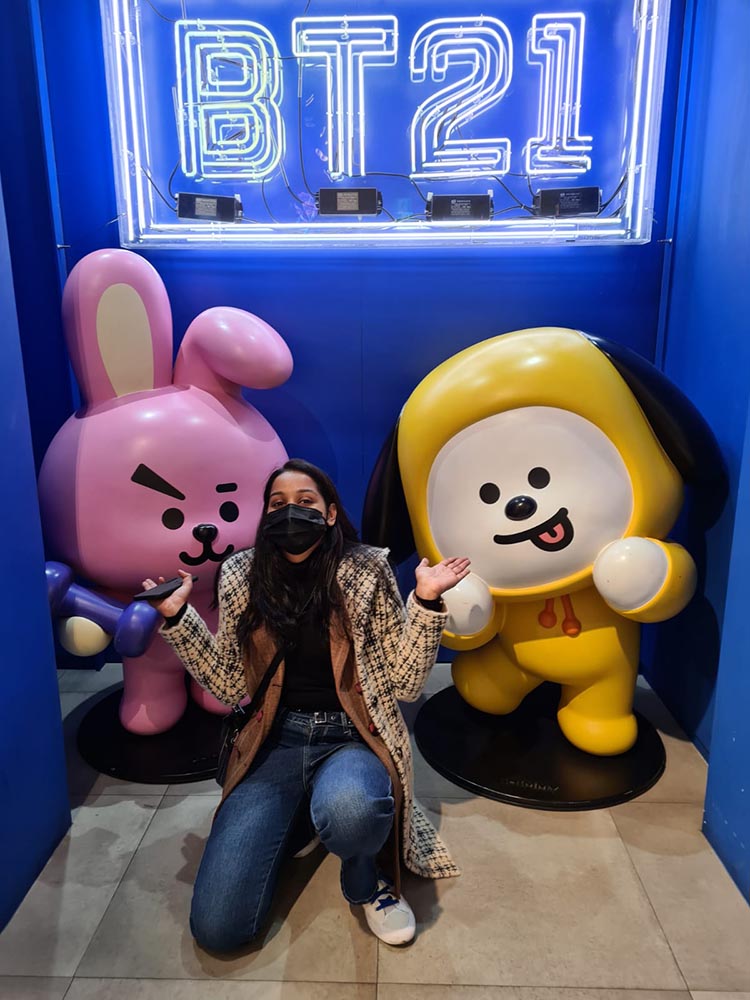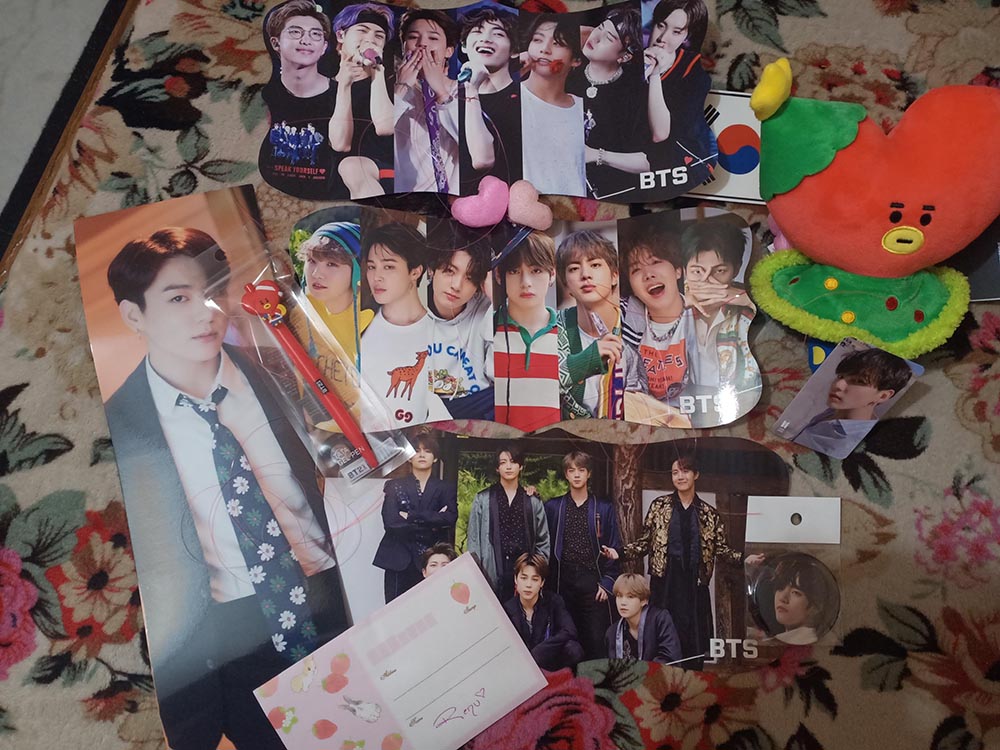K-pop in India: How the "Hallyu" Wave Swept through My Life and India
It started with a click. One moment, I was casually scrolling through YouTube, and the next, I was captivated by flashing lights, flawless choreography, and electrifying energy. The song? “Fantastic Baby” (2012) by BIGBANG. Before that, K-pop was just “Gangnam Style” to me – a viral moment, not a movement. But that one BIGBANG video changed everything. My YouTube recommendations soon filled with mesmerizing performances, live shows, and behind-the-scenes glimpses of idols. I was hooked.
Fast forward to today, and K-pop is no longer a hidden niche in India. It has transformed the way we consume music, fashion, and even language. Fan clubs thrive, dance workshops sell out, and Korean phrases slip into daily conversations. K-pop is everywhere – and growing faster than ever.
From underground to mainstream: K-pop’s early days in India
Back in the early 2010s, being a K-pop fan in India felt like belonging to a secret club. There were no concerts, no official merchandise sales, and certainly no K-pop songs playing in public spaces. If you wanted an album, you had to import it from Korea, pay hefty shipping fees, and wait weeks for delivery.

Fig. 2: K-pop dance by fan at graduation ceremony. (Photo by the author, 2017)
The community, however, was relentless. Fans gathered in Facebook groups, exchanged translations on Tumblr, and streamed performances from Korean TV shows like M Countdown and Inkigayo. The Korean Cultural Centre India (KCCI) in Delhi became a hub for passionate fans, organizing small events and dance competitions. Even without mainstream recognition, K-pop found a devoted audience.
The big bang: How K-pop exploded in India
Then came BTS.
By 2020, the global BTS phenomenon had taken India by storm. Indian media started covering K-pop, streaming numbers skyrocketed, and even those unfamiliar with the genre found themselves asking, “Who are these BTS blokes?”
But BTS wasn’t the only group making waves. BLACKPINK, EXO, SEVENTEEN, TWICE, STRAY KIDS, and NCT built formidable fanbases as well. Social media played a massive role – Indian fans trended hashtags, held online streaming parties, and contributed significantly to global music charts.

Fig. 3: The author, in Korea, posing with BT21 characters created by BTS members. (Photo by the author, 2022)
And then, events happened that helped spread K-pop’s growth in India. Dance competitions featuring K-pop routines gained national recognition, with Indian teams competing in Korea’s K-pop World Festival. In 2019, K-pop groups VAV, M.O.N.T, and IN2IT (now rebranded as Skye) became some of the first K-pop groups to perform in India in cities like New Delhi and Imphal. Accompanying the rise of K-pop, official merchandise became widely available, no longer a rarity in niche stores. In 2024, the K-Town Festival in Mumbai welcomed EXO’s Chen & Xiumin, GOT7’s BamBam, and B.I (formerly of IKON), proving India was now on the K-pop map.
K-pop in Daily Life in India
India is incredibly diverse, and each region has its own unique culture and identity. Despite its nationwide reach, K-pop’s strongest fanbase is mainly concentrated in urban, middle-class India. Metropolitan cities like Delhi, Mumbai, Bangalore, and Chennai lead the fandom, while the Northeastern states – culturally closer to Korea – embraced K-pop much earlier. But it is now spreading across the country.
Today, K-pop is not just an obsession for a niche group; it’s part of everyday Indian culture. Dance Studios have proliferated, and many now offer K-pop choreography classes featuring routines from groups like ITZY and NewJeans. Even Korean beauty and fashion trends have filtered in. K-beauty brands like Innisfree and Laneige are popular, and Korean fashion trends dominate Indian users’ Instagram accounts. K-pop has also promoted language learning, as more Indians than ever are studying Korean, fueling the rise of language institutes and mobile apps like Duolingo.

Fig. 4: K-pop merchandise distributed by fans at LG All India K-POP Contest. (Photo by the author, 2019)
Due to the growth of streaming culture, K-dramas like Crash Landing on You (2019) and Vincenzo (2021) rank among India’s top-streamed shows. In the realm of music, according to a 2023 survey by Spotify India, K-pop listenership grew by 300% in five years, with BTS, BLACKPINK, and EXO being the most streamed artists. Google Trends also shows a rise in K-pop searches, particularly in major cities.
K-pop is Here to Stay in India
For me, K-pop started as a passing interest but evolved into a lifelong passion. It’s not just about the music. It’s about the stories, the community, and the connections it fosters across borders. Once a niche interest, K-pop is now mainstream. In India’s ever-expanding cultural landscape, it has carved out a permanent place, proving that music truly has no language barrier. Whether you’re a casual listener or a die-hard stan, one thing is clear: this is just the beginning of India’s K-pop journey.
The future looks even brighter. There will be more concerts, and I wonder: will BTS, BLACKPINK, or SEVENTEEN finally perform in India? There will also be more Indian K-pop trainees. Aria, an Indian idol, made her debut in X:IN, marking a significant milestone as one of the first Indian members in a K-pop group. Her presence has sparked discussions about the potential for more Indian idols to follow in her footsteps. As global music scenes continue to blend, the question arises: could we soon see more Indian talent joining the K-pop industry? Moreover, with cultural crossovers on the rise, could Bollywood and K-pop collaborate in the near future? As the world becomes more interconnected, an Indo-Korean music partnership seems not only possible but inevitable, offering exciting possibilities for both industries.
Are you ready for the next wave?
Renu Deswal is a media and communication specialist with expertise in digital content creation, cultural research, and community engagement. Originally from Haryana, she has studied and worked in Delhi most of her life. She has a graduate degree from Hallym University in Chuncheon, Korea. She has presented research on transnational pop culture at international conferences and is passionate about documenting the intersection of global media and local cultures. Email: renudeswal12598@gmail.com
